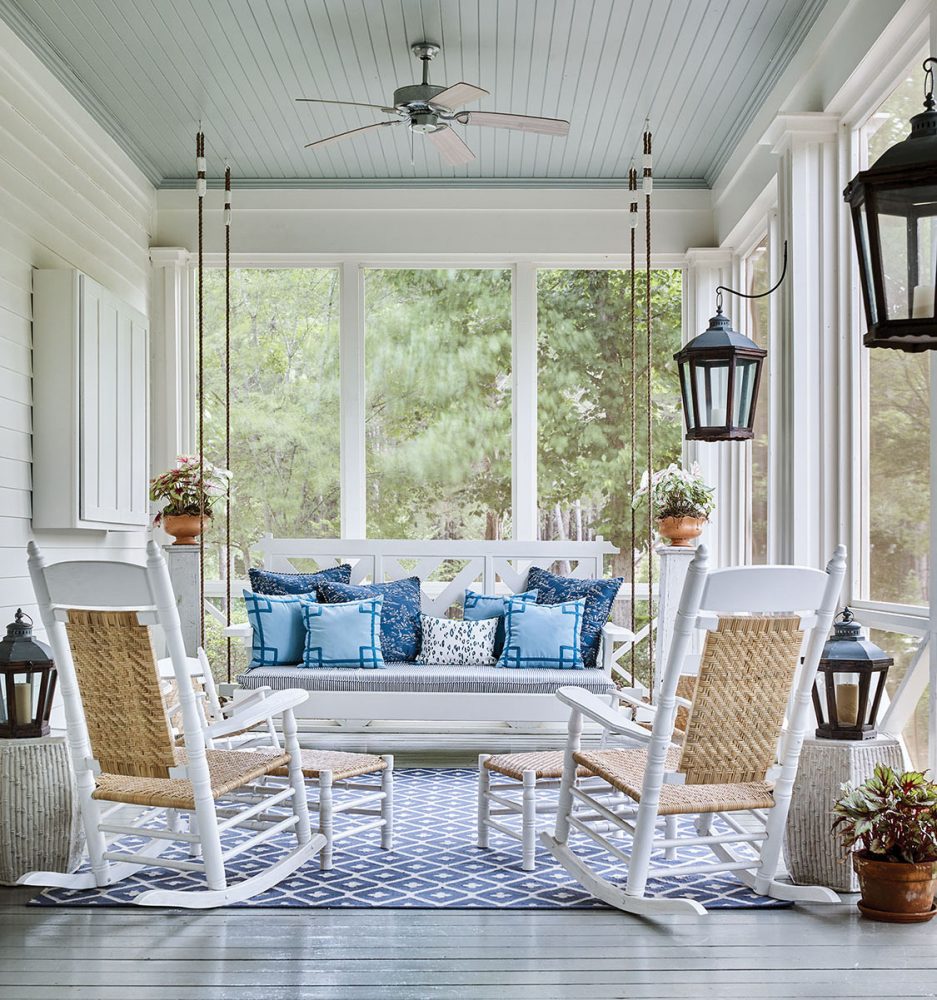If you are a romantic, you need a climbing rose in your life. Even if you have just the slightest dewy-eyed leanings, sooner or later, you’ll find yourself yearning to grow a climbing rose. Turning the pages of any Jane Austen novel or tuning in to any recently written Regency romance just reinforces the craving for something climbing and colorful. A springtime trip to Europe (especially Paris) gives urgency to the yen to cover something in your life in roses. To sum it up: Climbing roses are the stuff of dreams, and all gardeners are driven by their heart.
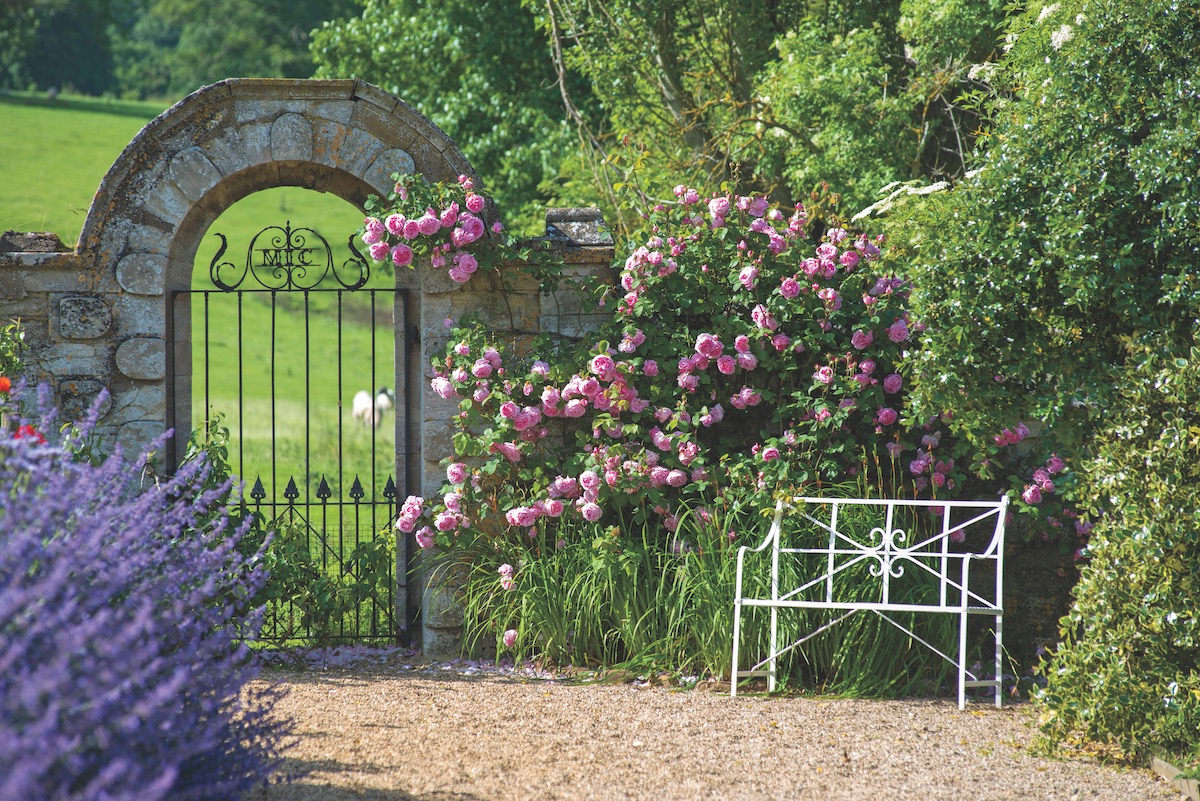
Photo courtesy of David Austin Roses
Named after the legendary florist and antique rose enthusiast, the hardy climber ‘Constance Spry’ was the first variety David Austin Roses introduced.
WHY CHOOSE A CLIMBING ROSE?
Why are climbing roses so compelling? Volume alone might have something to do with it. When given a sunny location, fertile soil, and good drainage, most climbing roses create an impressive mass of flower appeal. Arguably, any rose produces wow-worthy blossoms—the genus wasn’t crowned “queen of flowers” for nothing. Whether the rose in question possesses floral parts that are single, semi-double, or a nest of delicately incurved petals, roses are all sublime. Multiply that splendor by several hundred little miracles and you’ve got something to sigh over. Now, lift the whole shebang aloft. Send it roaming up a wall, let it embrace your fence, watch it clamber up to the eaves, or train it on a trellis that you stroll through, and you’ve accomplished a swoon-worthy spectacle. In short, climbing roses create a marvelous mass that is not often possible with other vines.
CLIMBING ROSES VS. RAMBLING ROSES
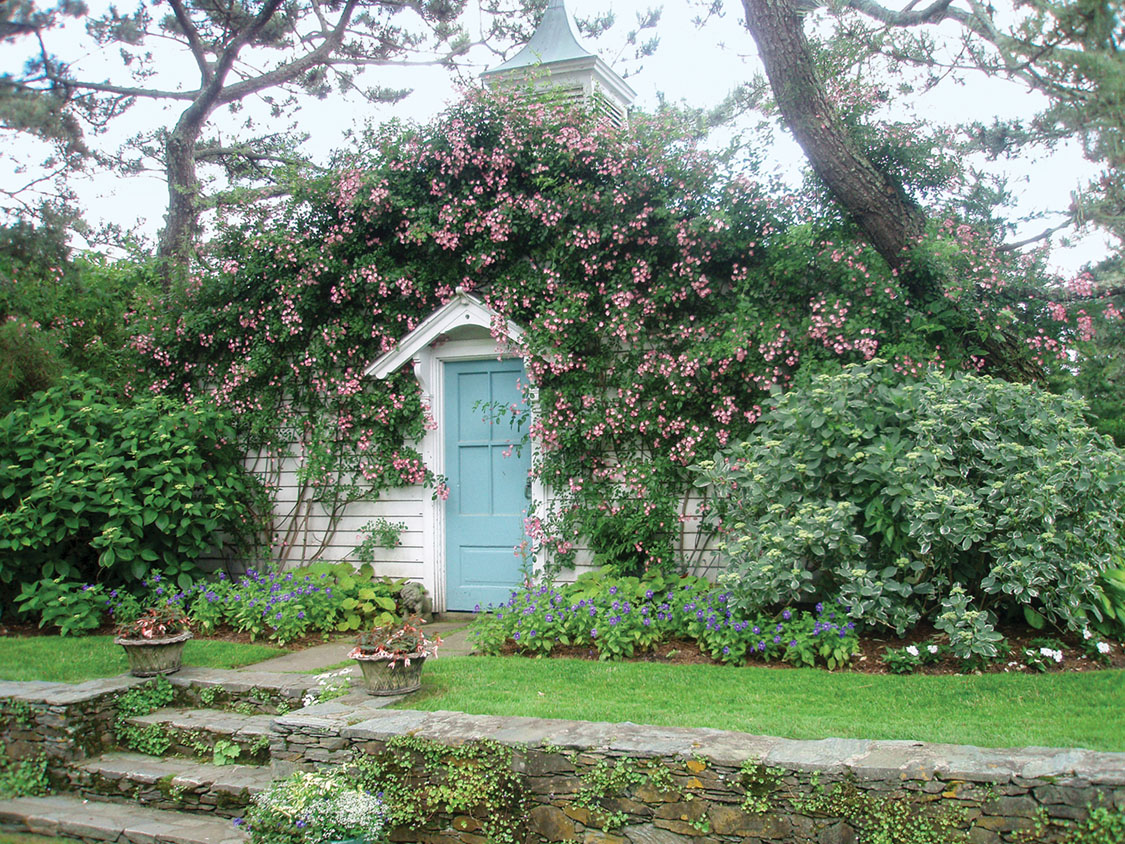
Photo by Mick Hales and Nick Mele
The garden shed shows off a romantic caplet of ‘Evangeline' roses.
So, exactly what do we mean by a climber? It’s not so cut and dried. There are climbing roses and there are ramblers. In the rose arena, ramblers are the loose cannons. They are vigorous verging on overly athletic, they can easily and quickly get out of control, they tend to send out lax growth, and they generally produce quantities of small flowers. Michael Marriott—one of the world’s most renown rosarians, retired front man for David Austin Roses, and the author of the recently published Roses: An Inspirational Guide to Choosing and Growing the Best Roses (DK, 2022)—warns that a rambler often develops into more rose than most gardeners can handle. Ramblers are upwardly mobile athletes. In other words: Be careful what you wish for in a vining rose, because ramblers can overshoot your goals by a longshot. Of course, it depends on where the rambler is being grown: Warmer regions such as California will give ramblers the opportunity to really take off. But unless you have a very sturdy and large support, most ramblers are going to overreach their wall, fence, or whatever in a blink. Michael suggests a sturdy tree as being the most realistic support for typical ramblers.
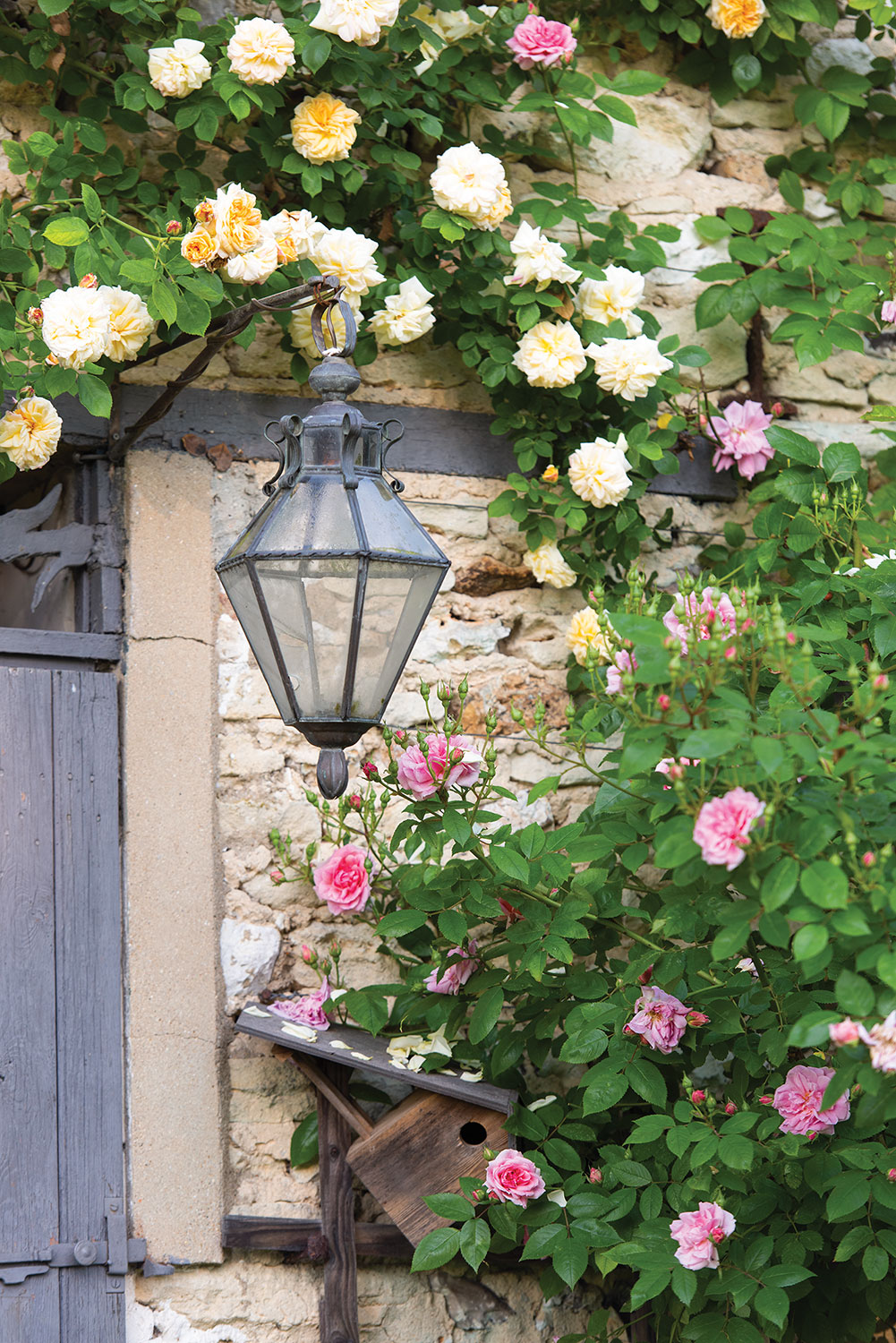
Photo by Kindra Clineff
The leitmotif for Sharon Santoni's gardens is climbing roses, which wrap the barn in color throughout spring. Pale yellow ‘Polka’ opens tawny orange and blanches with age. A climbing ‘Gertrude Jekyll’ David Austin rose entwines a nesting box.
On the other hand, climbing roses produce larger but fewer flowers, and they mind their manners. They’re still energetic. But relatively speaking, a climbing rose is more likely to remain within the proper ratio to cover a wall without overarching its limitations. As Michael Marriott points out, there are very practical concerns to consider when selecting between a rambler and a climbing rose. “Like: How high do you really want to climb with a ladder?” Although pruning might not be as strict a discipline with ramblers and climbers compared to shrub roses, flower deadheading and removing dead canes/whips are still factors to consider. You need access to your plant. Therefore, for most of us, climbers are the way to go.
REBLOOMING RAMBLERS
Another strong factor is reblooming. Ramblers tend to throw one massive party and then call it quits. There are some exceptions. Michael Marriott mentioned ‘Lady of the Lake’, which is a repeat-blooming rambler with semi-double tissue pink flowers introduced by David Austin Roses. Also blush pink and semi-double, repeat-flowering ‘Open Arms’ is a favorite of Marriott’s and described as a miniature rambler. ‘Snow Goose’ is a white, repeat-flowering 6-8 foot-tall rambler. At 12 feet, ‘Mary Delany’ is somewhere between a rambler and a climber and it repeats nicely with darker blush pink double flowers. One of Mary Delany’s major benefits is the fact that it is almost thornless—and that can be an important attribute in a rose that is voluminous. However, Michael points out that thorns help climbers hook into their crutch, gain a foothold, and stay up rather than tumbling down. “Harness those thorns,” he urges gardeners. As for ‘Zephirine Drouhin’—famed for being a climber and completely thornless—Michael suggests you steer clear. “Zephirine is particularly susceptible to disease and, unfortunately, those disease issues will spread spores to neighboring roses.” His advice? “Shovel prune it.” In other words, bury ‘Zephirine’ and move onward.
CLIMBING ROSE VARIETIES
In general, Michael Marriott feels strongly that you should explore some of the more recent climbing rose introductions, especially to gain the benefit from current work to build a stronger, more problem-free rose. He explains that although ‘New Dawn’ was formerly a mainstay, “Fantastic progress has been made in the last 15-20 years. Newer roses are more free-flowering and much healthier.” His recommendations for climbers?
- ‘Golden Gate’ is a free-flowering glowing yellow.
- ‘The Generous Gardener’ is a repeat bloomer with poetically double pink flowers emitting an old rose/musk scent.
- ‘Night Owl’ is a nearly thornless climber with prolific single purplish-magenta blossoms.
- ‘Highwire Flyer’ is a disease-resistant lipstick pink repeater created by William Radler who also bred the Knock Out® family of roses.
- ‘Lady of Shalott’ is somewhere between a shrub and a climber (“according to the climate and how you prune it”) with bounteous, peach-colored, full-bodied blossoms with voluptuous fragrance.
Monrovia has also entered the climbing rose arena with two recently introduced players in their Heavenly Ascent® series—a red and a pink flowering version. Specifically playing to a romantic audience, their 8-foot-tall compact climbers are geared toward the average pergola or archway. “They are beautiful but not overpowering,” explains Georgia Clay, New Plants Manager at Monrovia. The goal for the series is vigor, high petal count, low maintenance, rebloom, fragrance, disease resistance, and hardiness to Zone 5. It’s a lengthy wish list, but they are expecting to introduce other roses that check all the boxes.
PRUNING CLIMING ROSES

Photo by A.Ko | Shutterstock
Climbing rose trained along cord mounted to stucco wall.
Climber care can be baffling for a beginner. Michael Marriott has some sage advice based on experience. “On a wall, climbers need tying in as well as pruning in terms of how high you want them to grow.” But he cautions against rushing in with the pruning shears. “Don’t reduce the length of the main stem unless necessary.” For a truly luscious look, encourage side shoots by fanning the main stems out. And for mature climbing roses, he has a sadder-but-wiser warning about pruning: “Wiggle a stem before cutting; you might be surprised about the mass of branches above.” As for deadheading spent flowers, “Don’t be too hasty,” Michael warns. Many climbers produce lovely rose hips. His “best hips” award for a climber goes to ‘The Generous Gardener.’ “The hips are orangey-red and they last through winter. You can cut them for holiday decorations.”
FERTILIZING CLIMBING ROSES
To produce those masses of blossoms for cutting or leaving in place, you should give your rose the tools it needs to perform. Michael Marriott suggests going the easy route and applying a rose fertilizer configured specifically for the plant. He suggests two applications of fertilizer, spring and midsummer, applied according to the instructions on the fertilizer label. And he warns sternly against too much of a good thing. “You can do more harm than good if you don’t follow the directions.” As far as insect issues, Michael urges going organic. “Let nature do the work. Beneficial insects and birds will battle it out with less desirable bugs.”
CLIMBING ROSES IN ARRANGEMENTS
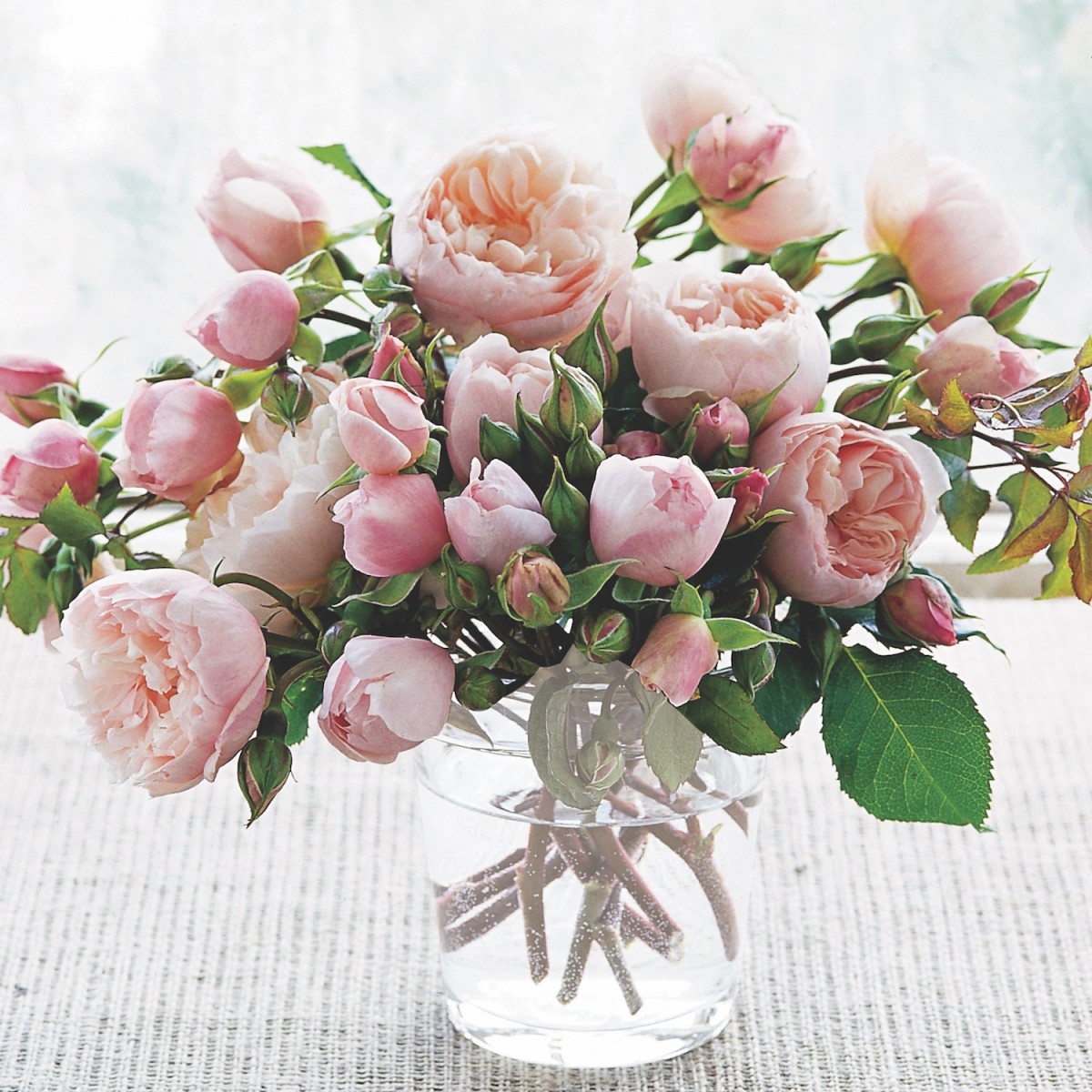
Photo courtesy of David Austin Roses
English roses and buds! This arrangement incorporates both buds and blooms of 'The Generous Gardner'.
For cut flower purposes, climbing roses are gaining an enthusiastic following. With his finger firmly on the pulse of all things rosa, Michael has seen the trend turning away from the stiff stems of typical cut flower roses. Instead, arrangers appreciate the lax, informal, pliable stems of a climber. “Climbers make arching, graceful growth,” according to Michael. And these dramatic double bloomers with prolific petal counts and strong necks are absolutely sublime bundled together or floating between airy blossoms. Roses take the star-attraction role, giving an arrangement personality and mood.
Climbing rose recommendations vary according to regions. In the North, hardy versions planted on their own roots will be a wise choice. In the South, Noisettes and true Tea Roses are a good way to go. When in doubt, Michael Marriott suggests visiting other gardens and asking your host to identify the selections planted. Can you imagine a more enjoyable assignment? An afternoon in the midst of climbing roses sounds like a truly blissful research experience that you need to do often and in large doses.
CLIMBING ROSES IN THE GARDEN
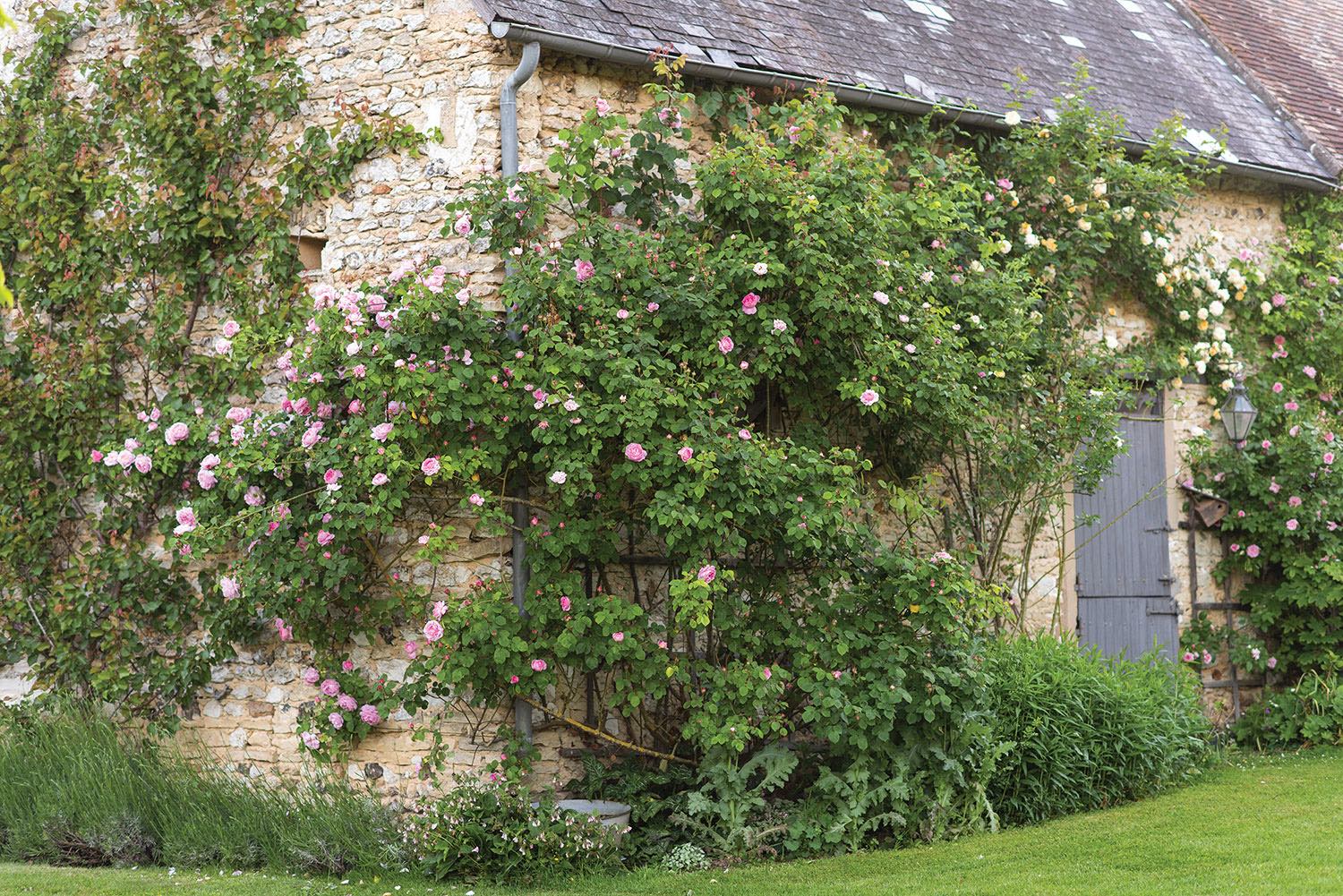
Photo by Kindra Clineff
‘Constance Spry’ roses clamber up the 1832 barn at this garden in Normandy, France. See more of Sharon Santoni’s garden.
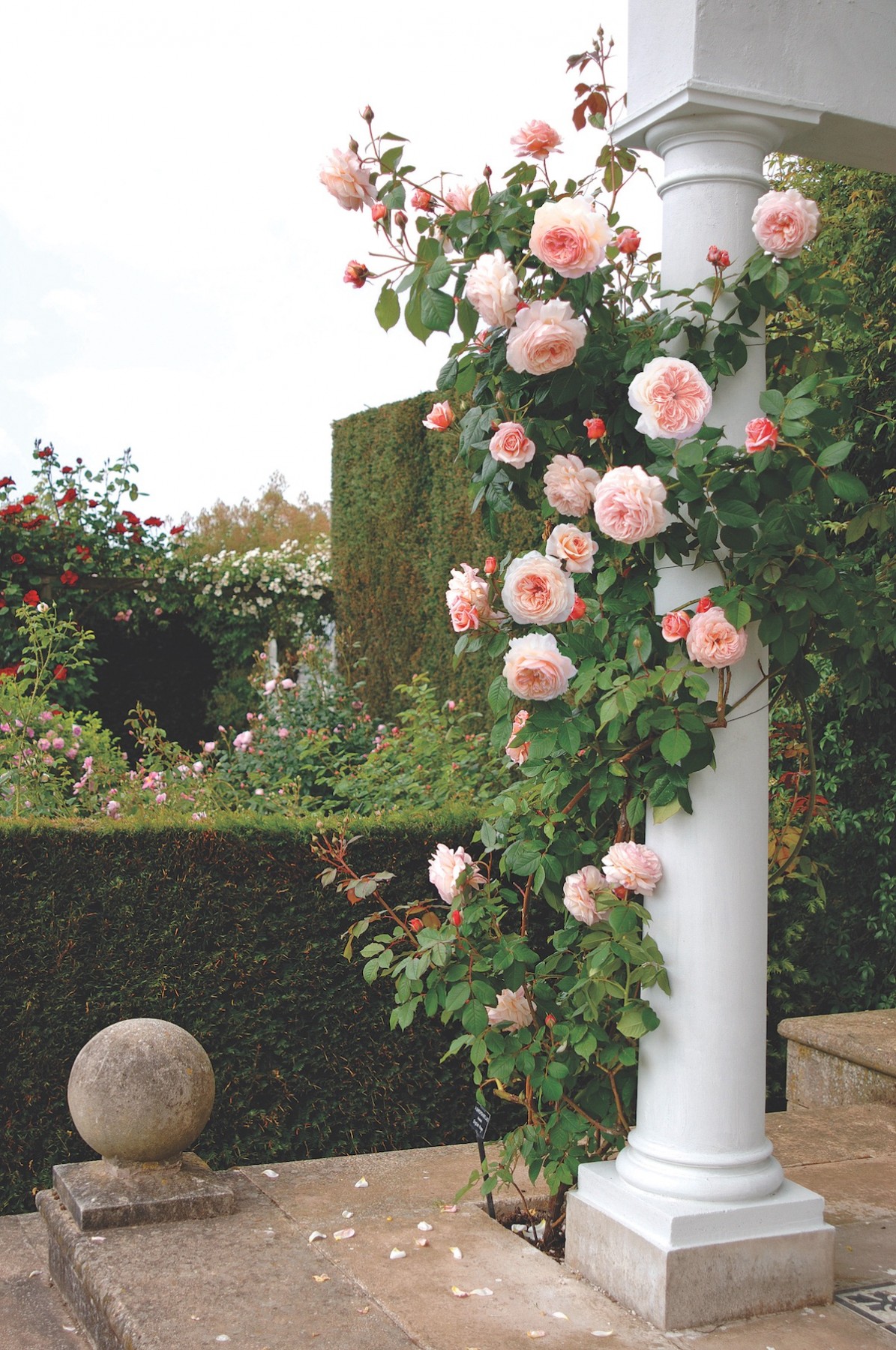
Photo courtesy of David Austin Roses
Climbing roses, such as ‘A Shropshire Lad,’ are quintessentially romantic. This one climbs a column in the gardens of the David Austin Roses plant center. See more of the David Austin rose gardens.
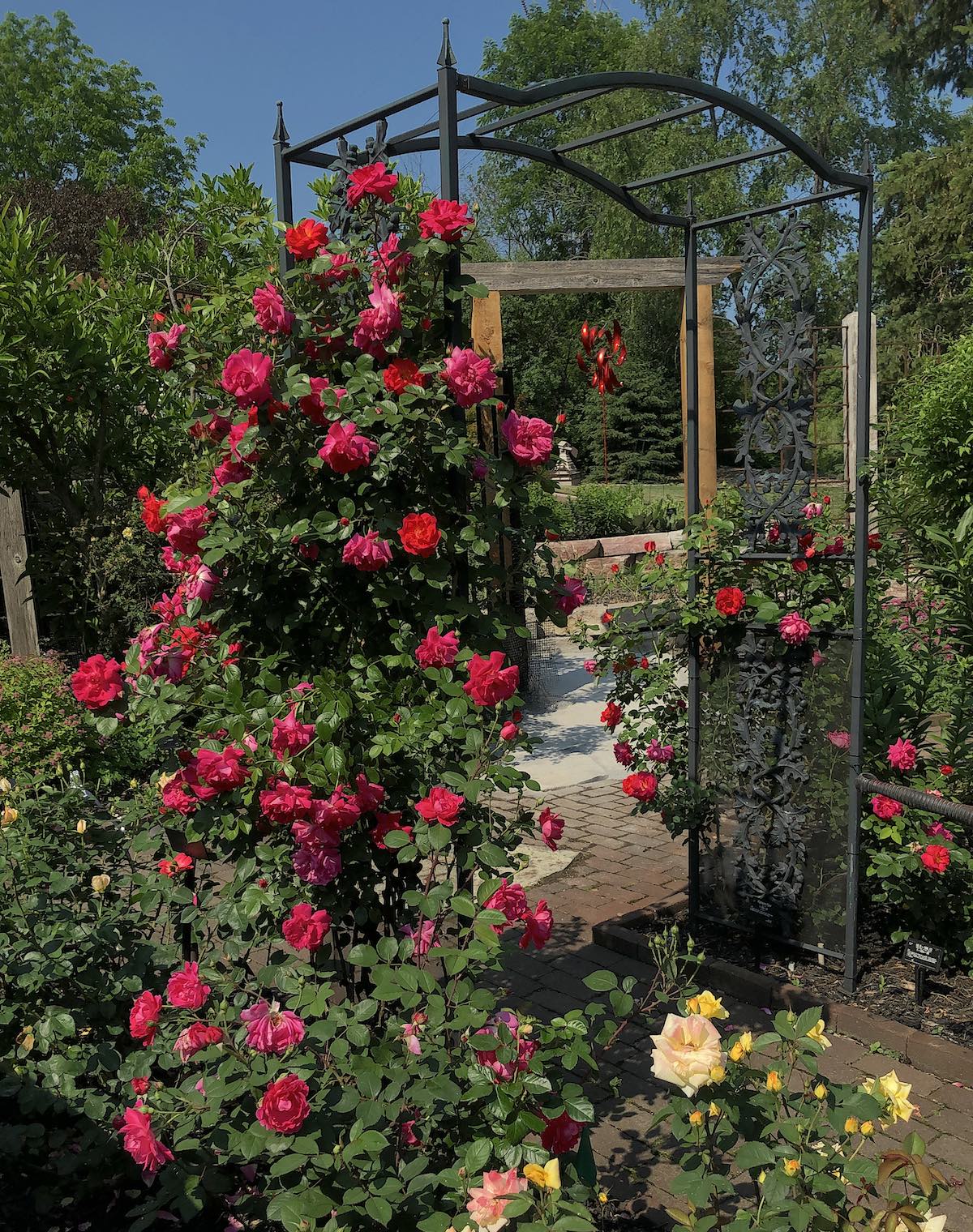
Photo by William "Will/Bill" Radler
Highwire Flyer™ climbing an arbor in William Radler’s Wisconsin garden.
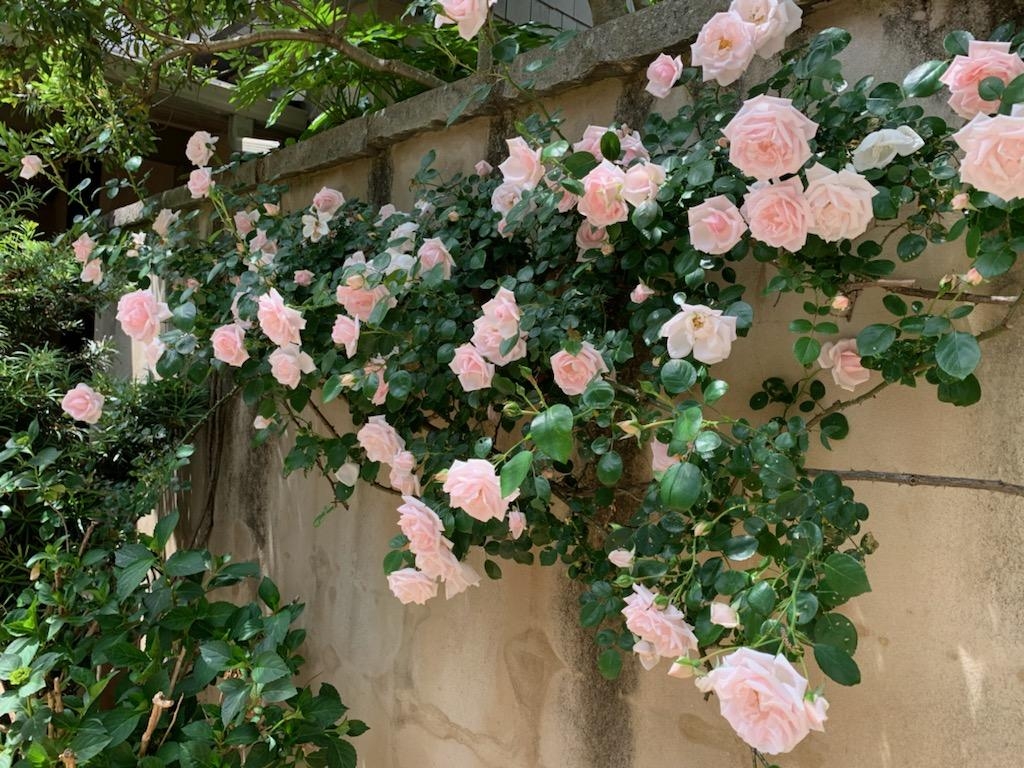
Photo courtesy of photo courtesy of Father Nature Landscapes, Birmingham, Alabama
A trained ‘New Dawn’ climbing rose blooms along the top of a garden wall. See more “Summer-Approved Bloomers” from Daniel McCurry.
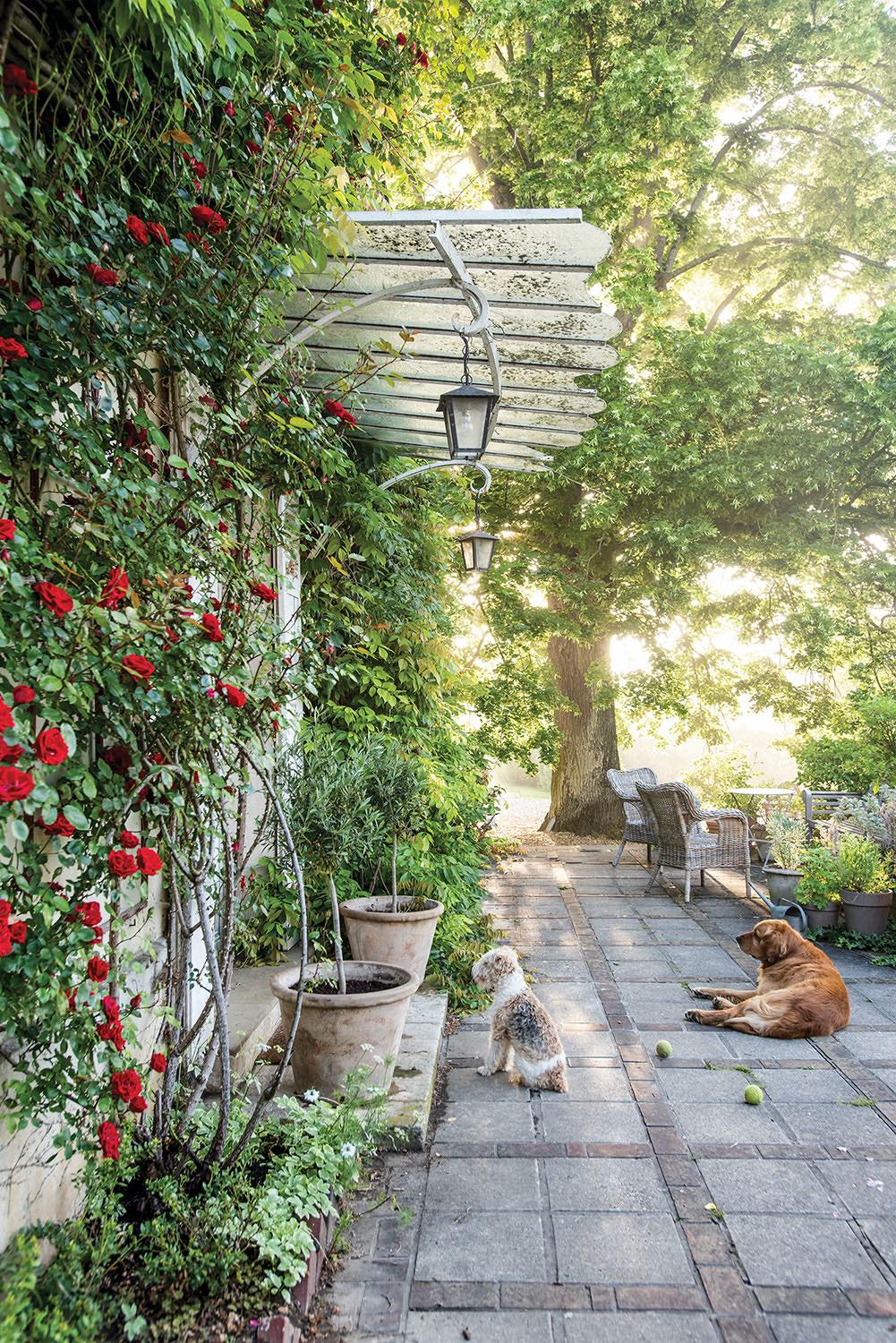
Photo by Kindra Clineff
A glass marquise over the door leading to Sharon Santoni’s dining terrace is a typical French touch. Equally classic are the climbing vintage roses clambering up the walls above potted olive trees. See more of Sharon Santoni’s Normandy garden.
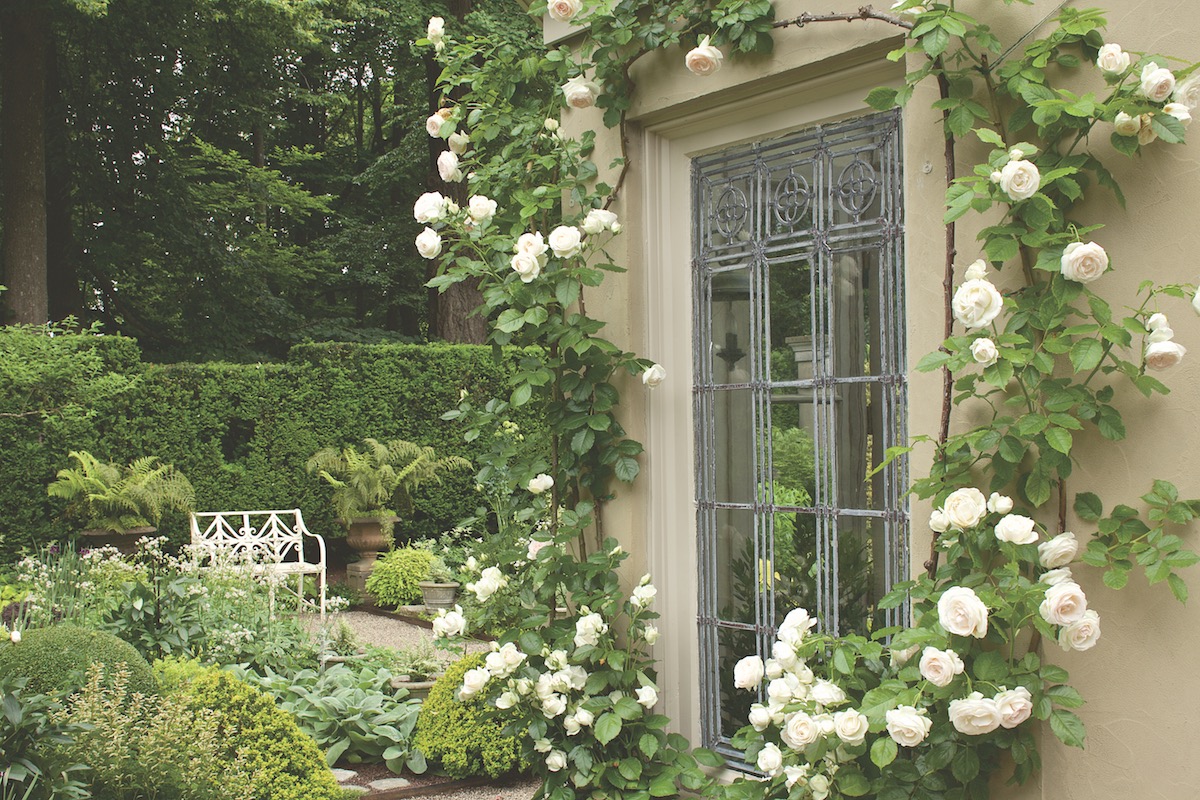
Photo by Mick Hales
Gorgeous, ‘Eden’ climbing roses adorn the orangery, which serves as both a potting shed and a place for Betty Bearden Pardee to entertain guests. See more of the Pardee’s Newport garden.
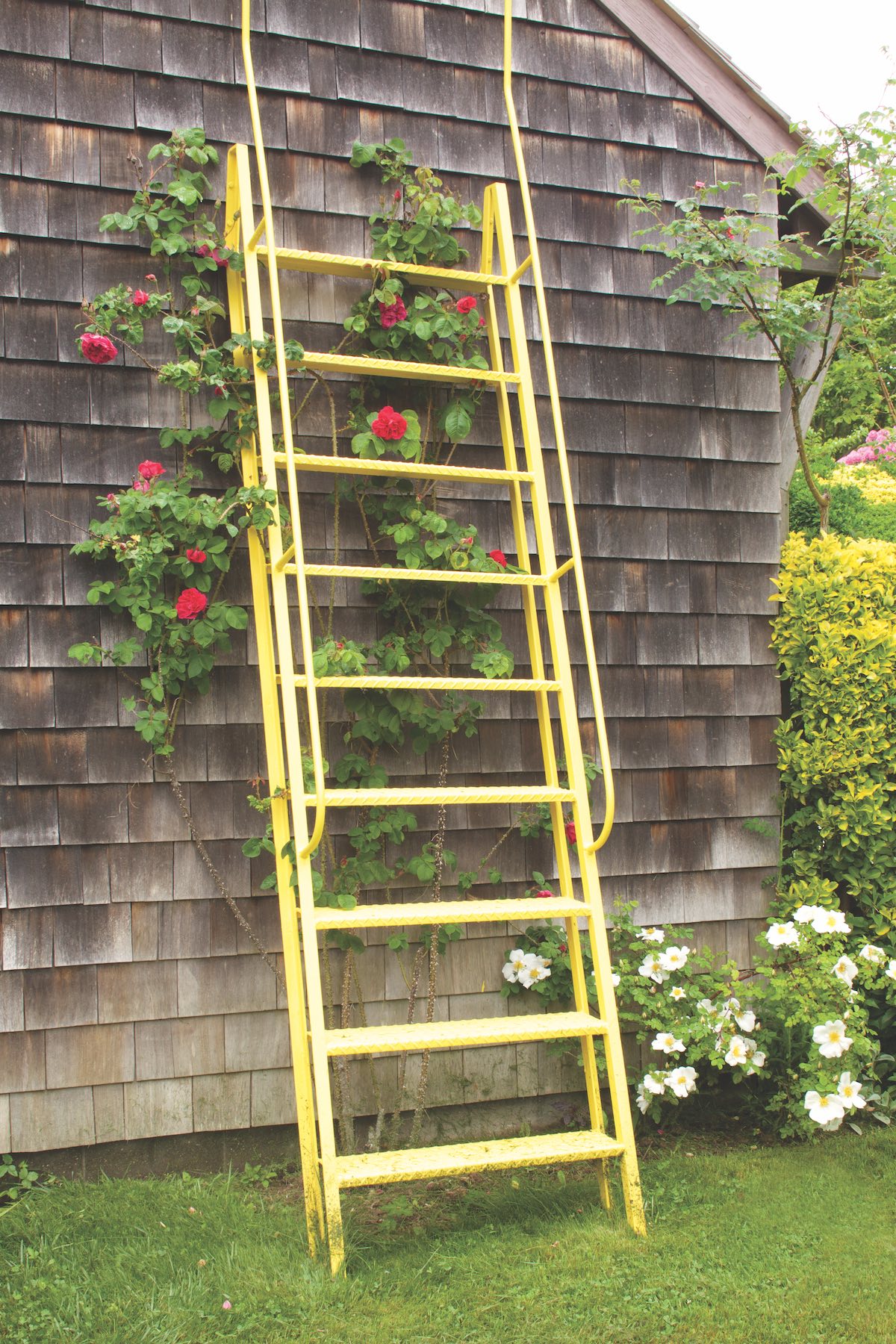
Photo by Mick Hales
“In the old days, a climb revealed an ocean view,” says Madoo Conservancy Executive Director Alejandro Saralegui. Regardless, the climbing roses (white ‘Sally Holmes’ and red ‘Canadian Explorers’) are still inviting. See more of Robert Dash’s garden at the Madoo Conservancy.
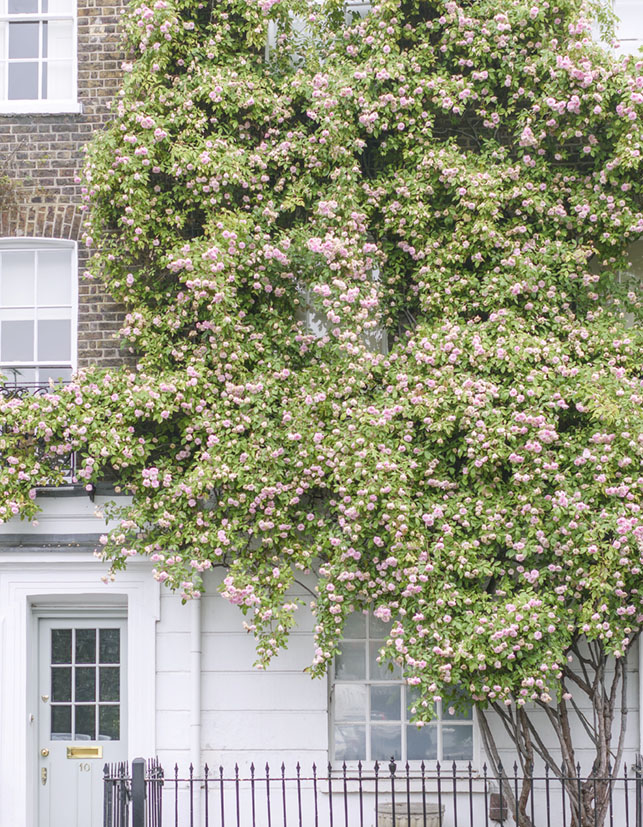
Photo by Georgianna Lane from her book, London in Bloom
A pink-flowering climbing rose nearly covers the front of a house in Chelsea. See more of Georgianna Lane’s photos from London In Bloom.














